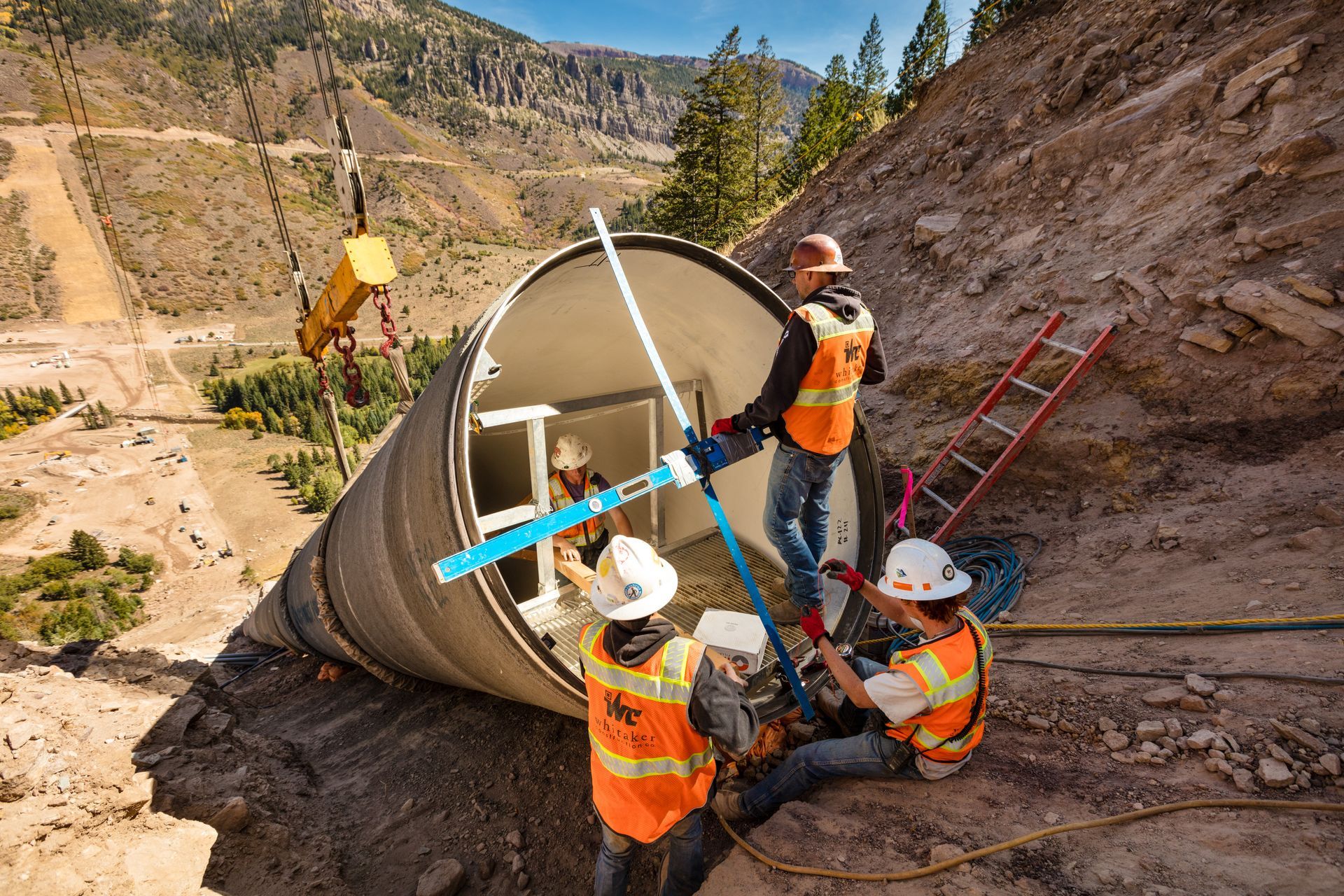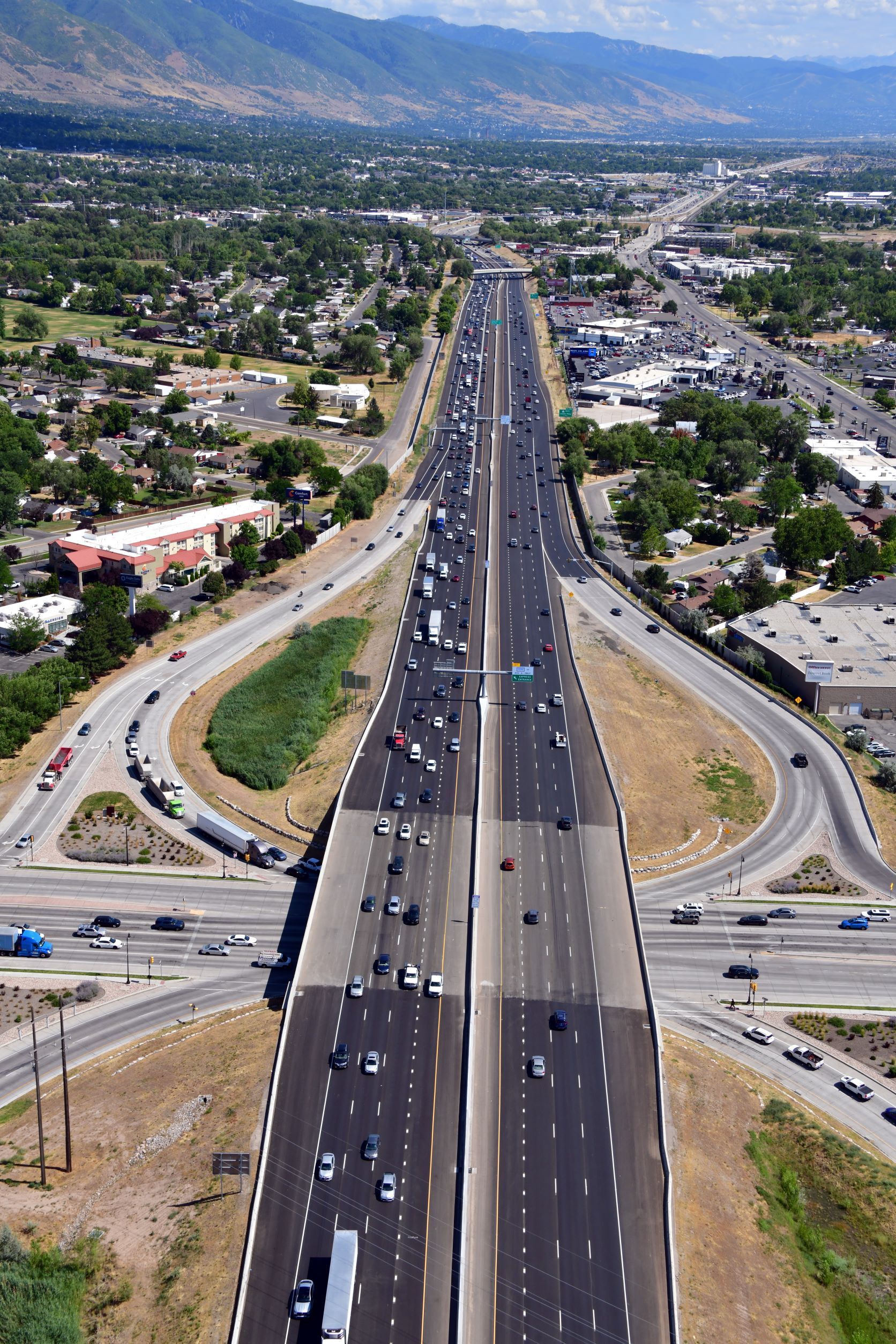Beehive State maintains its “C+” average in latest infrastructure report card from the American Society of Civil Engineers—one of only four states to receive that grade, and better than the national average. By Brad Fullmer
Roads and Bridges
Earn Top Marks
Investing in transportation infrastructure has been a priority for Utah leaders for years, spurring the state to earn high marks for roads and bridges, a testament to UDOT’s ability to appease lawmakers—and the ever-finicky traveling public—and maintain consistent funding by efficiently building top-shelf projects via innovative delivery methods, while keeping traffic flowing during construction.
“You can see our transportation system is well above [the] national average, which is due in part to Utah’s leadership recognizing the need,” said Friant, adding that the state is well-positioned to maintain a high transportation score because it doesn’t depend on federal funding, which can wildly fluctuate. “80% of transportation funding comes from the state. In other states, it’s reversed.”
Per ASCE’s report, Utah roads earned a “B+” grade, which is markedly better than the national “D+” average. In 2023, state lawmakers approved a record $14 billion in upgrades and new construction over six years to build or expand roads and highways in all parts of the state, but especially areas seeing increased traffic because of Utah's rapid population growth.
Roughly 95% of roads in the state are in good or fair condition, and the state's transportation asset management plan has prioritized proactive maintenance on the state's busiest highways.
Utah's bridges saw a one-step grade decrease to a “B” in the 2025 report card—while markedly better than the national “C” bridge grade, current data could indicate worsening conditions. In 2020, 38% of bridges were in good condition, compared to 22% in 2024. While the state has worked diligently to prioritize the preservation, rehabilitation, and replacement of bridges, rapid increases in construction costs and an aging bridge inventory mean that existing funding levels can no longer support the number of bridge projects the state has historically supported. Approximately 35% of bridges in Utah are more than 50 years old, which is the projected service life of a bridge. Over the last decade, UDOT has replaced an average of 23 bridges per year. If the state does not accelerate bridge construction, it would take more than a century at the current pace to replace all existing bridges statewide.
Water Resources Earn Solid Grades
As communities across the West grapple with concerns about reliable water supplies due to ongoing drought conditions and increased demand, Utah's drinking water grade is unchanged at a “B-“. Respectable, but not fantastic.
And keeping up with Utah’s projected growth poses potentially mammoth concerns about how future water-related projects will actually be funded. Lisonbee said the federal Infrastructure Investment and Jobs Act (IIJA), passed in 2021, helped fund a handful of new infrastructure projects, but a lot more is needed, and the state needs to start looking at putting aside money now to meet the needs of a population that is expected to double to seven million by 2060.
“We were lucky enough to receive a once-in-a-generation grant from IIJA. But to make a dent, we need to see sustained federal investment, said Lisonbee. “We’re hoping IIJA gets renewed at the end of the cycle. We’re also looking at public-private partnerships—we’re going to have to be really creative with federal, state and private funding to meet future water system needs.”
Utahns are doing their part to preserve precious water supplies by reducing home water usage by 20% over the last two decades. However, existing water sources are facing additional stress due to harsher drought patterns, decreased winter snowpack, and an increasing number of people and businesses in Utah. It means the state—via its 38 water conservancy districts—must find additional water sources, many of which are located far from population centers, requiring water utilities to build costly new pipelines and distribution systems.
The Utah State Water Plan estimates that needed improvements and repairs to the state's water infrastructure will total $38 billion from now to 2060—an average of more than $1 billion per year.
"A growing population and more frequent droughts also mean our water supply faces ongoing threats,” added Friant. “While Utahns have drastically reduced their water usage, there are ongoing challenges, and leaders need to be proactive with solutions."
Dams Need Work; Canals and Levees an Afterthought
Even as Utah contends with water shortages, the state's dams, levees, and canals are being tested by intense storms and flooding events. The grade for Utah's dams remained a “C+”, with just 52% of Utah's high-hazard potential dams considered in satisfactory condition.
One concern is that the state currently budgets a mere $3.8 million per year for high-hazard dam rehabilitation work, a fraction of the approximately $450 million required to bring these dams up to a satisfactory level.
Utah's levees received the lowest grade on the report card, a “D-“. These levees protect more than $13 billion worth of property and infrastructure, including densely populated communities and key facilities such as the Salt Lake City International Airport. Most levees in the state are 60+ years old, and little is known about their current condition or the details of their construction.
Utah's canals received a “D+”. While they are also part of the state's flood management plan, most were built in the 1800s for irrigation purposes. Since many are privately owned, there is limited information on their present condition.
Aviation Grade Jumps
Utah's investment in aviation infrastructure helped bump its grade to a 'C+', one mark up from 2020. The dazzling new terminal at Salt Lake City International Airport has bolstered Utah's biggest airport with four construction phases totaling over $5 billion, including two new state-of-the-art concourses, a multi-level parking garage, and new runways/taxiways.
Upon completion of Phase IV in October 2026, the airport will boast a capacity of 34 million passengers annually; in 2024, it had 28.3 million passengers, a 5% jump from the previous year.

Implementing Feedback
If Utah wants to earn higher marks and remain top of the national class, leaders should follow the recommendations laid out in the 2025 Report Card for Utah's Infrastructure, which include:
- Plan for the future
As Utah's population grows, the state must conduct regular, comprehensive analyses of its future infrastructure needs. This is especially critical for water resources, canals, transportation, and waste management. The state must provide consistent, reliable funding to support improvements, maintenance, resiliency, and risk reduction.
- Prioritize funding for bridges
Many bridges built during Utah's early population growth are facing the end of their service lives and are now in fair or poor condition. The state needs to increase the number of bridge replacement projects and create ongoing, dedicated funding sources to preserve, rehabilitate, or replace aging bridges.
- Focus on future water needs
Utah's water future depends on maximizing the use of available water resources. Water systems should collaborate with agencies and other stakeholders to ensure the Great Salt Lake is restored to healthy conditions. These efforts include strengthening Utah's canal infrastructure through funding for transitioning from open channel to piping, while reducing losses from seepage and evaporation.
- Increase dam safety funding
By increasing funding to $10 million annually, the state would be able to rehabilitate all high-hazard dams within 50 years. An increase to $20 million per year would enable faster repairs, but it would still take 25 years to complete all required repairs.
The report card was created as a public service to inform citizens and policymakers about the infrastructure needs in Utah. Civil engineers use their expertise and school report card-style letter grades to condense complicated data into an easy-to-understand analysis of Utah's infrastructure network.































